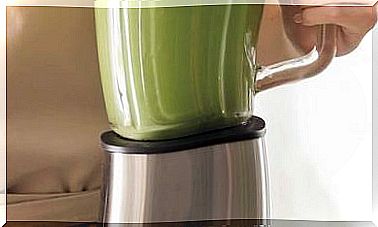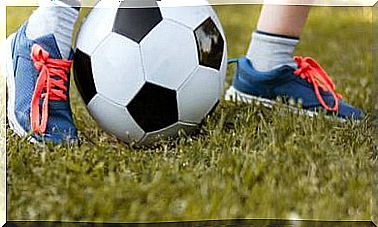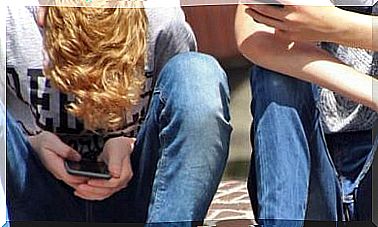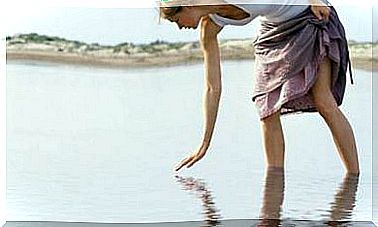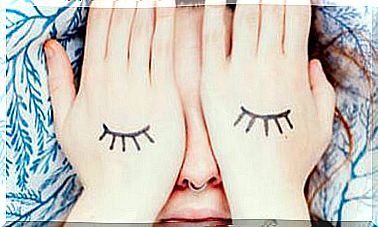Is Barefoot Really Healthy?
If temperatures rise, we often feel like walking around naked. We explain if it is healthy to go barefoot and when it is better to put your shoes on.

- How often should you go barefoot?
- Going barefoot reduces sensitivity
- Fungi are not a problem if your feet are dry
- Walking and running barefoot gradually
When you walk barefoot, you not only experience a refreshing sensation, but you also engage the muscles of your feet and give them a massage. But we are so used to shoe protection that many people wonder if it is really healthy to bury your toes in the sand or walk in the meadow without shoes. Don’t we risk catching a cold or ending up with an injury?
How often should you go barefoot?
Walking barefoot is the most natural way to get around. It is always a good idea to take off your shoes and walk barefoot. It has several advantages:
- The foot muscles are trained and strengthened.
- Blood circulation is stimulated .
- The feet receive a massage that stimulates the reflex points on the sole of the foot, according to the principles of foot reflexology.
- If the floor is made of conductive material, static electricity is discharged, which produces a number of health benefits.
In this way the consequences of the use of footwear are counteracted. Many shoes restrict freedom of movement too much, which can atrophy the muscles of the foot and leg.
It is even beneficial to run barefoot, because it strengthens the muscles even more. When we run barefoot, we do it more cautiously in each case, which favors proprioception and bodily self-awareness.
If you’ve rarely or never walked barefoot, you’d better go barefoot for only half an hour a day. The same goes for the race. In this way, little by little you will get your feet used to the new way of moving and you will be able to increase the time.
If you don’t have a tanned foot, hard, stony surfaces are not a good idea to start with. It is better to start walking on soft ground (such as grass or beach sand) and gradually increase the hardness of the ground.
Going barefoot reduces sensitivity
The more you walk barefoot, the less sensitive your feet become. The unevenness of the ground, such as stones, sticks or other small obstacles harden the soles of the feet and protective calluses form.
Children are often told that the ground is too cold to walk barefoot. To avoid risking a cold, parents put slippers on them instead of letting them walk barefoot. This precaution is not necessary because in general walking barefoot strengthens the immune system.
The well-known Kneipp cures also take advantage of the stimulus of the cold and are based on walking barefoot to stimulate circulation, for example, when stepping on the dew or taking mini walks through the freshly fallen snow.
Fungi are not a problem if your feet are dry
In addition to the fear of catching a cold, many fear athlete’s foot or nail fungus when walking barefoot. However, this fear is largely unfounded, because walking barefoot protects against infection rather than causing it.
Toenail or toenail fungus like to spread inside hot, damp shoes. If, on the other hand, the feet are moved barefoot, they receive fresh air and stay dry because sweat can evaporate quickly. Feet with good blood circulation are also more resistant against a fungal infection.
The problems appear when we go barefoot in humid and crowded places and then the feet do not dry well.
Walking and running barefoot gradually
Do not overwhelm your feet at first: the tendons, muscles and joints must get used to the movements, which are completely different from when we are wearing shoes.
You should also walk barefoot first on terrain such as grass or sand and step by step dare to step on harder and uneven surfaces such as dirt roads, gravel or rocks.
Jogging or running barefoot is only for “advanced users”, because the feet are much more stressed when jogging than when walking. At the beginning it is advisable not to run more than a quarter of an hour without shoes.
An intermediate step between footwear and going barefoot is to wear barefoot running shoes, also called “minimal shoes.” These shoes have a very thin and flexible sole and some models have a space for each toe, as if they were gloves.
The sensation of walking or running barefoot or wearing minimal footwear is quite close to running barefoot, while at the same time your feet are better protected against accidental injury thanks to the soles.
But even with barefoot shoes you shouldn’t jog as long as if you were footwear; You must also respect the adaptation period and gradually increase the time and pace of the race, following your intuition.
